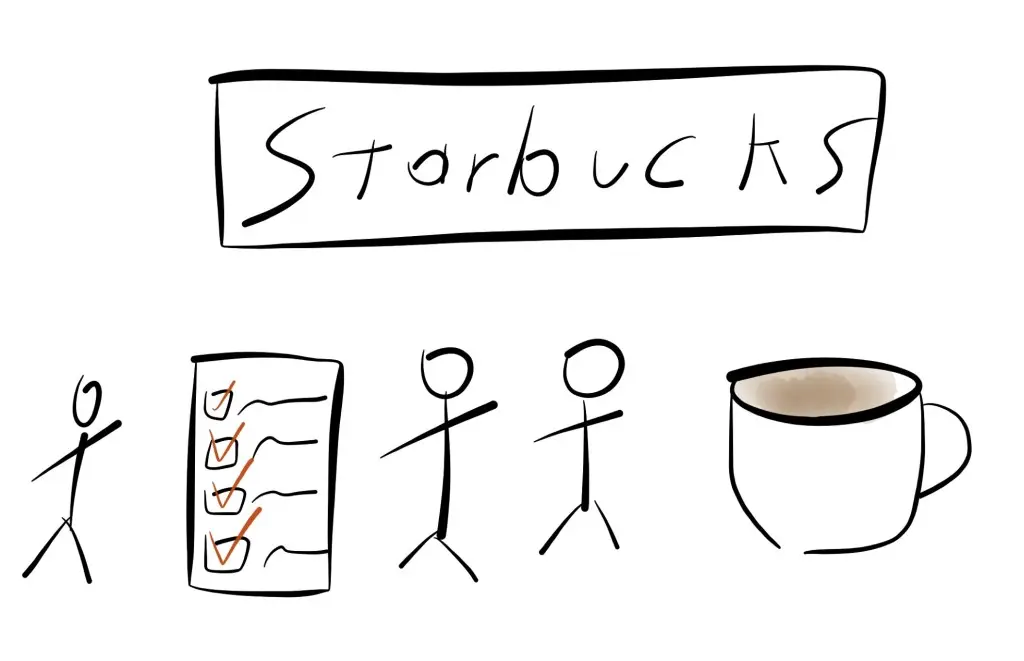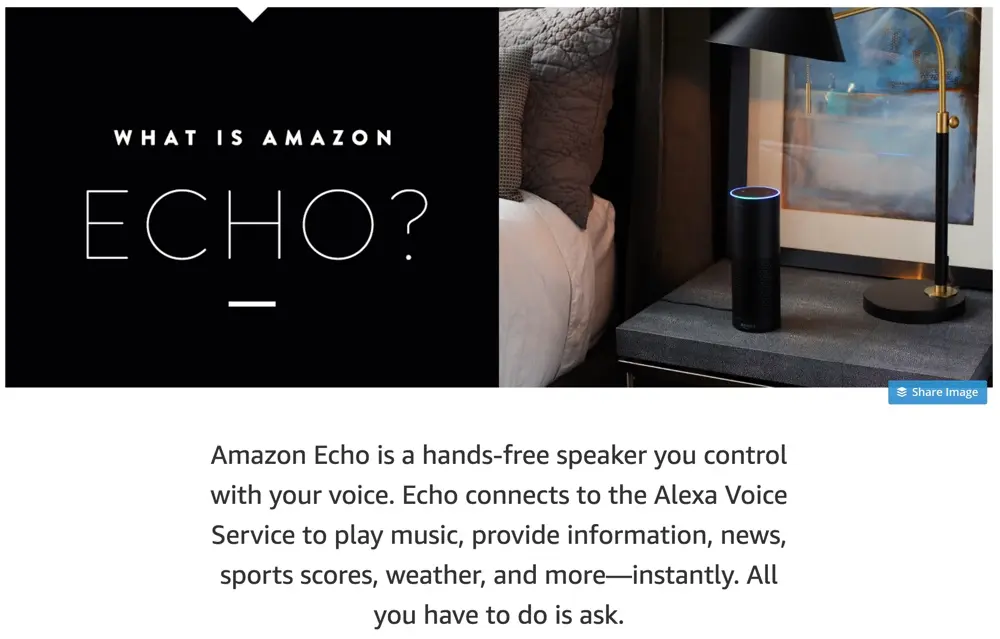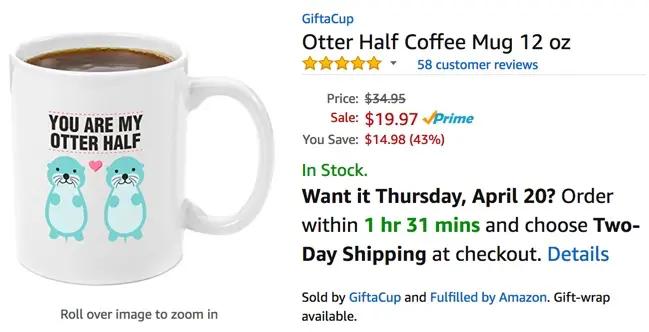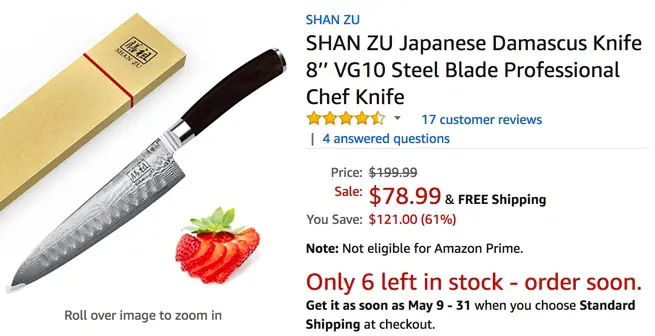- Research Customers for Better Copy
- Context is King. Plan for it.
- What is it? Be direct. No mysteries.
- I’m selfish. What’s in it for me as a customer?
- Why should I sign up today?
- Trust Amazon
- How do I take action right now?
- Less is more. Go back to the top and cut anything you don’t need.
- Consider that you wrote your best headlines later.
- The TLDR Version
This is the first in a three part series on copywriting for lead generation landing pages. The knowledge here has been gained over the last 6 years of hosting some amazing (and some not so amazing) lead generation campaigns. We’ve reviewed thousands of pages, know what works, and when you might want to start over.
Part one discusses what to consider before you write and what elements are important to your landing page. Part two helps you write it with more tactical advice with a ton of examples. Part three will cover writing for some specific goals like auto responder emails, contest pages, etc.
Research Customers for Better Copy

To write better copy you’ll want to understand who your target market is, and how to stand out from the crowd. Here are some other tactics for researching your landing page copy:
- Describe your target customer with 5 traits. For example: Where do they shop? How old are they? What magazines / forums do they read? What is their average salary?
- Identify 20 keywords that your landing pages should target. Get inside the head of your customer. If you wanted to buy a product online, what keywords would you type into Google? Do you know what the most popular searches for your product is?
- Identify related and competing services. Who is your biggest competitor? Does what they do work? Why? Can you improve upon it?
- Describe the problem you’re solving like a customer would. How much background information does a typical customer have? Never assume they know what you know. Put yourself in their shoes for just a minute and write out what the problem is in their words.
- Capture the 5 best headlines you’ve seen. Sometimes the inspiration you need is right around you. Write them down and don’t be afraid to “borrow” them.
Once you’ve done this research find 3-5 potential customers and write a sales letter to them about your product. If they acknowledge they know what you are talking about then you are on the right path.
I once met a person doing customer interviews in exchange for $5 Starbucks cards. Get creative and find some real people to talk to in order to verify the research you’ve done.
You can download this research cheat sheet with a bunch of great exercises.
Context is King. Plan for it.
Before writing anything imagine the customer journey. How will most people get to your landing page? How are you planning to drive traffic and reach out? What are potential customers going to see first? An ad? A newsletter? Through a friend on Facebook? Let’s look at some of the ways you should approach context with some general rules:
Running an ad? The headlines on your page should match what you advertise.

If most people are coming to your landing page with an ad that promises one thing, but the headline on your landing page promises another, your conversion rate will suffer because the offer isn’t what they clicked on.
Emailing a large list? Consider a second landing page for “warm” leads.
If you have 10,000 people that already know a lot about you on an email list. You want them engaged in a referral contest. For this set of people you don’t need to spend as much time educating them about who you are… You can use that space to sell them on the participation you are looking for instead.
At KickoffLabs you can easily create two landing pages for the same campaign. One for “cold” leads that would be the primary page shared while teaching them about you and your products. A second page you send existing customers to that is simpler and sells them on the contest.
Multiple customer segments? Create multiple pages.
**
** This advice is similar, but if you are working to build out a two sided marketplace or have multiple sets of customers don’t try and sell both sets on the same page. Create a page (and maybe even whole campaign with emails and all) that speaks more personally to each customer segment. Don’t just have people pick their segment from a dropdown and try to generalize your copy.
Your company home page may have to be general, but your landing pages should NOT be. You can always cross link the pages if needed.
Does your product segment have pre-existing conditions? Confront them.
There are some product segments like fitness, fashion, food, etc that people will come in with pre-existing notions or even flat out skepticism about. Ignoring those “tough questions” won’t help you build trust. You are going to have to go the extra mile to convince people that they didn’t step into the “red light district” of the internet and leave without taking any action.
What is it? Be direct. No mysteries.
If someone wouldn’t know what you are offering in the first 1-2 headlines then you’ve failed. I don’t care if you are managing a pre-launch. Leave the mystery to the movies and be up front about what your product is and the problem you intend to solve.
Your audience needs to recognize your product or service as the long-awaited solution to their problem right away. They should never have to say this:

Why no mystery?
Still think you want to be mysterious? Ok. Here’s what will happen. I’ve seen way too many landing pages like this:
“Coming soon! We’re redefining health. Join now”
To which the customer journey looks like this:
Really? Ok – With food? Are you a gym? Do you sell supplements? I know i want to be healthy, but I don’t know if I trust you. Maybe I’ll sign up, but I really just want to join a better gym.
You may end up with a great initial conversion rate with a lot of email addresses… none of whom will ever buy anything from you because they never really knew what they were signing up for.
A more direct pitch would be:
“Fresh meals delivered weekly. Eat healthier than you ever have in 2017!”
You have to play the long game by starting with your most ideal customers. That last headline is direct about the service and the benefit to the customer.
See how directly Amazon answers the “What” question here:

Repeat yourself. Consider going “Presentation Style”
You may want to use space on the page to explain your product a couple of different ways. It may feel like you are beating people over the head… Good… you are on the right track. It only feels that way to you because you live and breath in your product space. Keep in mind most people don’t know 1% of what you probably know about the product. It should feel educational for the person reading your landing page. Consider a “presentation style” flow that goes something like this:
- Tell them what you are going to say… A headline that outlines three benefits.
- Say it. Explain each of the three benefits
- Tell them what you said. A headline at the bottom of the page.
I’m selfish. What’s in it for me as a customer?
Far too many companies spend time bragging about themselves instead of speaking to customers and explaining the benefits.
The fact that your founders went to Harvard and Yale is irrelevant to the person wondering if you are going to solve their problems. So are most press mentions and awards in reality.
You need to explain the why in clear benefits that explain a “why” to potential customers. The first thing you need to answer, before scribbling out one word of description, is why:
Why would someone want to purchase your product? Why is your product the ultimate solution to their problem?
Why go with you and not your competition? Is your price better? Is your service better? Do you have expanded options?
The why goes beyond utility and into psychology of the buyer. You see, buyers don’t really need your product unless you’re selling water, air, or other basic goods. All other goods and services are wants, to varying degrees.
Here’s an example to illustrate what I mean.
The What: 2 oz of beard oil* with a dropper top
The Why: Softens and moisturizes beard hair with an intoxicating scent and an easy to use dispenser for quick application.
Check out the “Why” from Apple about the iPad pro. It’s devoid of features.

As you can see, the why doesn’t just list features, it leads with benefits. Your product description should always answer why someone should choose your product and not the competition– why you’re different, why you’re better, and why you’re the obvious choice.
“We believe in… “ versus “You’ll be supporting..”
Why should I sign up today?
So I understand what it is you do (or intend to do), but is there a reason for me to take action right now on the page? There should be.
This is especially important in the case of a KickStarter or product pre-launch page. Since I might not be able to get the benefits of your product today… why should I give you anything now?
Here are some examples of urgency:

Notice how they prey upon the customer’s desire to get it sooner by saying they only have 1.5 hours left to order?

This image showcases a great use of scarcity.
You can use a countdown timer easily on kickoffLabs pages as your promotions get close to ending to make sure people know your exclusive offer will be over soon. You could also make it clear when you start that there are only “500 beta spots left”.
Trust Amazon
You don’t have the budget to hire a team of conversion experts. But you know who does? Amazon. You can bet that everything they do on product pages has been meticulously tested and optimized so that visitors are most likely to take action. When you are considering the copy on your page look at how amazon sells their products and services.
Maybe Amazon isn’t the best example for your business, but someone is the 400lb gorilla in your industry that has researched this. I’m not saying you steal their copy, but look how they tell a story and understand how your story might be different. Your potential customers will surely be making the comparison. This means you need to be prepared for their objections.
How do I take action right now?
This is less about copywriting, but do the headlines lead me to the call to action where I would take the next step. Does the call to action stand out and match the headlines? We’ll get into this more in Part 2.
Less is more. Go back to the top and cut anything you don’t need.

You need only as much copy as is required to get someone to take the next step. Imagine every part of your sales funnel is like an assembly line. The job of the ad is to get someone to click. Once they click the landing page’s job is to get them to convert. Once they convert the thank you ( or contest ) page job is to get them to share you with their friends.
Only use as much copy as is required for each individual step. A common mistake I see all the time is a landing page that starts talking about why they should share with friends… when the person hasn’t even signed up yet. It’s wasted on that step, doesn’t help them decide if they want to sign up, and is more copy you have to maintain over time. You don’t want to do that.
A simple thought process for cutting copy: Consider how you could cut 50% of your content. Could you have 2 sentences instead of 4 in a description. How about a tweet? Could you say the same thing in a tweet instead? If so… do it and don’t look back. Never be sad about cutting copy from your landing page.
An added bonus is that generally large blocks of text are ignored and make great designs harder to achieve.
Consider that you wrote your best headlines later.
I’ll often see people write their best headlines buried at the end of a landing page. I believe it’s because the practice of writing headlines, benefits, etc helps organize their words by the end. Unfortunately most people don’t then go back and refine the top (and most important part) of their landing pages with what they learned writing the rest of the page. Consider doing that after you’ve finished.
The TLDR Version
It’s OK. You skimmed and made it down here. I’ll summarize how to prep for writing great landing pages here.
- Do some research on customers and competitors. Test copy out on a few of them.
- Understand the context of the customer landing on your page. Write for them.
- Be direct instead of mysterious. Explain what you do.
- List benefits to the customers instead of features to explain the why.
- Give some incentive to take action NOW.
- Learn from the 400lb gorilla’s.
- Make the next step obvious.
- Go back and cut copy. Your best headlines may be buried at the end.